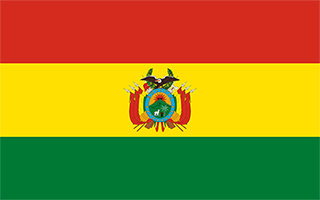Facts and Data
Webpages:
Official Unesco Page
Protectedplanet.net
Basis Data:
Unesco World heritage since: 2000
Size of heritage: 1,523,446 ha
Coordinates:
Longitude: -59,133°
Latitude: -13,733°
Summary
The National Park is one of the largest (1,523,000 ha) and most intact parks in the Amazon Basin. With an altitudinal range of 200 m to nearly 1,000 m, it is the site of a rich mosaic of habitat types from Cerrado savannah and forest to upland evergreen Amazonian forests. The park boasts an evolutionary history dating back over a billion years to the Precambrian period. An estimated 4,000 species of flora as well as over 600 bird species and viable populations of many globally endangered or threatened vertebrate species live in the park.
Location on Map
Show bigger map on Openstreetmap
Introduction
Noel Kempff Mercado National Park is a UNESCO World Heritage site located in the Velasco Province of the Santa Cruz Department in Bolivia. This magnificent park covers an area of approximately 1.5 million hectares and is renowned for its exceptional biodiversity and stunning natural landscapes. The park's history dates back to the 19th century, and it has been a protected area since the 1980s.
History
The history of Noel Kempff Mercado National Park is closely tied to the exploration and colonization of the region. In the late 19th century, German explorer and geographer, Baron von den Steinen, ventured into the area and documented its unique flora and fauna. However, it wasn't until the 20th century that the park gained recognition as a protected area.
In the 1980s, the Bolivian government, in collaboration with international conservation organizations, recognized the ecological importance of the region and established Noel Kempff Mercado National Park. The park was named after the renowned Bolivian biologist and conservationist, Noel Kempff Mercado, who dedicated his life to the study and preservation of the country's natural heritage.
Current State
Noel Kempff Mercado National Park is a haven for biodiversity, boasting an incredible array of plant and animal species. The park is home to over 4,000 species of plants, including rare orchids and bromeliads, as well as numerous endemic and endangered animal species.
The park's diverse ecosystems range from lush rainforests to savannahs and wetlands, providing habitats for jaguars, giant otters, tapirs, and over 600 species of birds. The park's rivers, such as the Iténez and Paraguá, are teeming with aquatic life, including the elusive pink river dolphin.
Efforts to protect and preserve the park have been successful, thanks to the collaboration between the Bolivian government, local communities, and international conservation organizations. The park is managed by the National Service of Protected Areas (SERNAP), which ensures the enforcement of regulations and the sustainable use of natural resources.
Visitors to Noel Kempff Mercado National Park can explore its wonders through various guided tours and hiking trails. The park offers breathtaking views of its iconic landmarks, such as the majestic Huanchaca Plateau and the stunning waterfalls of Arco Iris and El Encanto. Additionally, the park provides opportunities for birdwatching, wildlife spotting, and cultural encounters with indigenous communities.
Conclusion
Noel Kempff Mercado National Park in Bolivia is a UNESCO World Heritage site of immense ecological value. Its rich history, diverse ecosystems, and exceptional biodiversity make it a must-visit destination for nature enthusiasts and conservationists. The park's current state reflects successful conservation efforts, ensuring the preservation of its unique flora and fauna for future generations to appreciate and enjoy.
